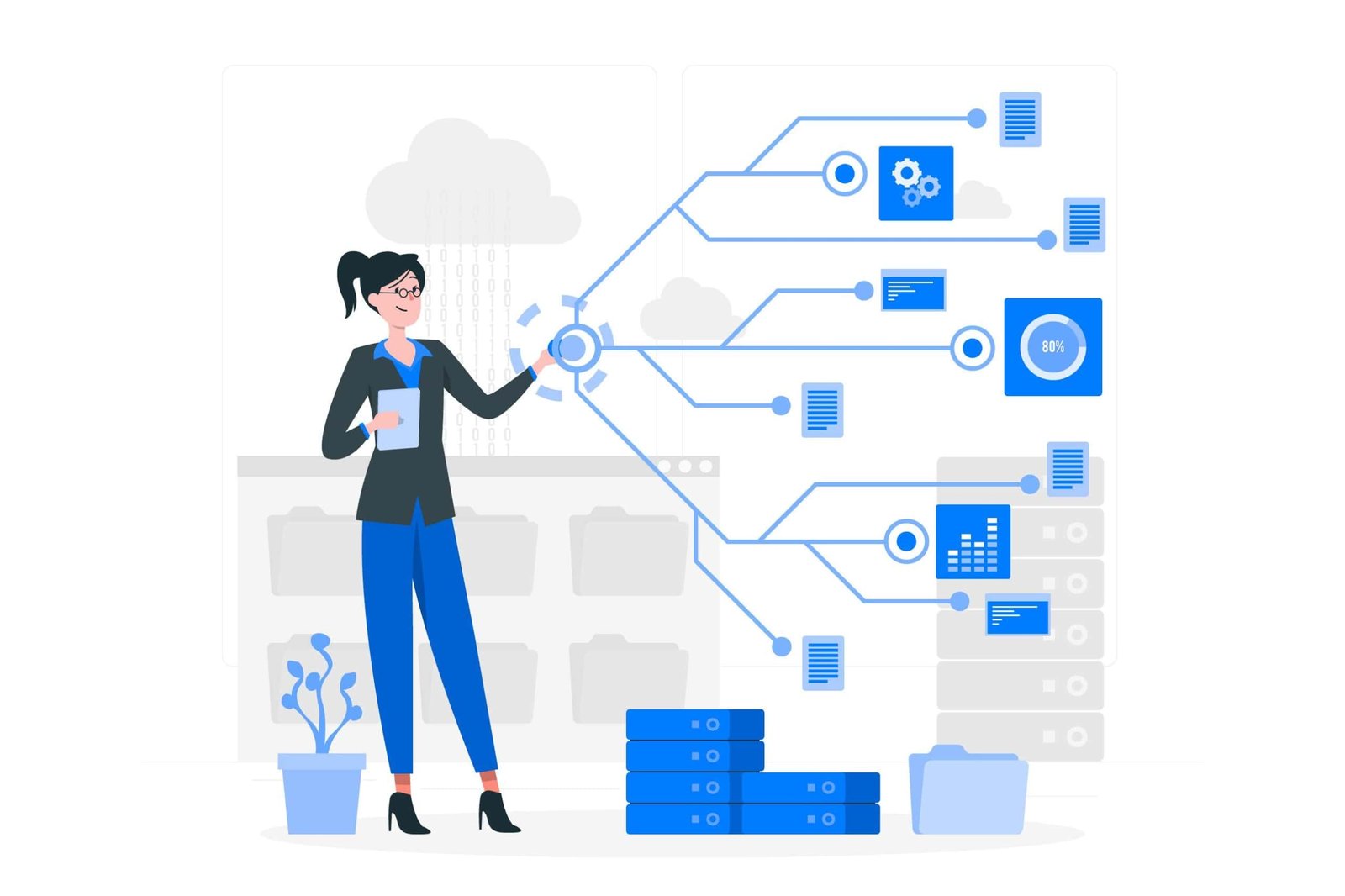What is Data Mining?
In today’s data-driven world, organizations collect vast amounts of data from various sources. Information like customer interactions, and sales transactions plays a pivotal role in decision-making. But, this data is often stored in disparate systems and formats. Thus, making it challenging to gain meaningful insights. Here comes the role of Data Mining. Read this blog to know more about Data Integration in Data Mining,
The process encompasses various techniques that help filter useful data from the resource. Moreover, Data Integration plays a crucial role in data mining. Thus enabling businesses to extract valuable insights from volumes of data. Data integration combines data from many sources into a unified view. Thus, enabling businesses to perform effective data mining.
Understanding Data Integration in Data Mining:
Data integration is the process of combining data from different sources. Thus creating a consolidated view of the data while eliminating data silos. So, it provides a comprehensive picture for analysis and decision-making.
Types of Data Integration:
There are various types of data integration techniques, each serving a specific purpose. Let’s explore some common types:
- Vertical Integration- Vertical integration involves merging data from different hierarchical levels within an organization. For example, integrating data from sales departments at different regional branches.
- Horizontal Integration- Horizontal integration combines data from similar sources or systems across different organizations. For example, integrating customer data from different retail stores under the same company.
- Entity Integration- Entity integration focuses on linking data that relates to the same entities. It ensures consistent and accurate information across systems. For example, customers or products, from different sources.
- Schema Integration- Schema integration deals with reconciling data stored in different database schemas or structures. It involves mapping and transforming data elements to align with a unified schema.
The Process of Data Integration:
Data integration involves three main stages:
- Data Extraction: It involves retrieving data from various sources. This can include databases, files, web APIs, or other interfaces.
- Data Transformation: It focuses on converting and standardizing data. Thus, ensuring consistency and compatibility across different sources. Data cleaning, normalization, and reformatting to match the target schema is used.
- Data Loading: It is the final step where transformed data is loaded into a target system, such as a data warehouse or a data lake. It ensures that the integrated data is available for analysis and reporting.
Importance of Data Integration in Data Mining:
- Improved Data Accuracy: We can identify errors by integrating data from various sources. Thus leading to improved data accuracy and reliability.
- Enhanced Decision-Making: A unified view of data enables organizations to make better- decisions.
- Increased Operational Efficiency: It streamlines data retrieval and analysis processes. Thus, reducing the time required to access and process data from different sources.
- Deeper Business Insights: Integrated data provides a holistic view of business operations. Thus, allowing organizations to uncover valuable patterns and trends.
Data Integration Techniques in Data Mining:
1. Manual Data Integration:
Manual data integration involves gathering, transforming, and consolidating data from different sources. It requires human effort to extract data from each source and merge it. Some of the common tools used are spreadsheets or databases.
Pros :
- Flexibility: Manual integration allows for customization and adaptability according to specific requirements.
- Control: Human intervention ensures accuracy and quality control throughout the integration process.
- Low Cost: No additional tools or software are required. Thus making it a cost-effective option for small-scale integration.
Cons :
- Time-consuming: Manual integration can be time-consuming, especially for large datasets or frequent updates.
- Error-prone: Human error is a possibility during the manual integration process. Thus, leading to inconsistencies or inaccuracies.
- Limited Scalability: The process is not workable for handling large volumes of data.
2. ETL (Extract, Transform, Load):
ETL is a widely used data integration technique. It involves three main steps: extraction, transformation, and loading.
Pros :
- Automation: ETL tools automate the extraction, transformation, and loading processes.
- Data Quality: It provides mechanisms to cleanse and transform data. Thereby, improving data quality and consistency.
- Scalability: ETL processes can handle large volumes of data and complex integration scenarios.
Cons :
- Complexity: ETL implementation requires technical expertise and familiarity with the chosen ETL tool.
- Cost: ETL tools can be expensive, especially for organizations with limited budgets.
- Latency: Data loading, extraction and transformation may lead to latency.
3. Virtual Data Integration:
Virtual data integration, allows organizations to access and query data from multiple sources. Moreover, there is no need to work on it manually.
Pros :
- Real-time Access: It provides real-time access to data from diverse sources. Thereby, eliminating the need for data replication.
- Agility: Integration of changes is easier in this case.
- Reduced Complexity: The unified view reduces the complexity of data representation.
Cons :
- Performance: Querying data from multiple sources in real time can impact performance.
- Dependency: Virtual integration relies on the availability and performance of the underlying data sources.
- Security: Ensuring secure access to data from various sources can be challenging in virtual integration scenarios.
4. Data Federation:
Data federation integrates data from different sources on-the-fly. Thus reducing the physical consolidation of the data into a single repository. It allows applications to query and retrieve data from many sources as if they were a single database.
Pros :
- Real-time Integration: Data federation enables real-time access to data from multiple sources without data replication.
- Data Source Autonomy: Each data source can maintain its own data model and control, reducing dependencies and providing data source autonomy.
- Reduced Storage Requirements: Data federation eliminates the need for storing redundant copies of data in a central repository.
Cons :
- Complexity: Data federation requires a robust middleware layer to handle data integration and query optimization.
- Performance: Querying data from multiple sources in real time may impact performance, especially for complex and resource-intensive queries.
- Data Consistency: Ensuring data consistency across disparate sources can be challenging in data federation scenarios.
Data Integration in Data Mining with Example:
To illustrate the practical application of data integration, let’s consider an example from the retail industry. Imagine a multinational retail chain operating in different countries. Each country maintains its sales data in separate databases.
By integrating the sales data from all countries into a central data warehouse, the retail chain can analyze global sales performance, identify popular products across regions, and optimize inventory management. This integration provides a unified view of sales data, allowing the organization to make data-driven decisions at a global scale.
Issues During Data Integration in Data Mining:
While data integration offers immense benefits, it also comes with certain challenges. Some common challenges include:
- Data Incompatibility: Different data sources may use varying formats, structures, or terminologies, making it difficult to integrate them seamlessly.
- Data Quality Issues: One of the common issues that arise in the process of Data Integration is inconsistency, errors, or missing values, affecting the overall accuracy and reliability.
- Data Security and Privacy: Integrating data from multiple sources raises concerns about data security, privacy, and compliance with regulatory requirements.
- Technical Complexity: The process of data integration requires expertise in data modelling, extraction, transformation, and loading (ETL) tools, which can be technically complex and resource-intensive.
Wrapping It Up !!!
Data integration is a vital component of successful data mining initiatives. By combining data from diverse sources into a unified dataset, organizations can unlock valuable insights. Thus enabling better decision-making. It enables businesses to overcome data silos, improve data accuracy, and gain a comprehensive understanding of their operations.
FAQs
What is the role of data integration in data mining?
Data integration plays a pivotal role in data mining by merging data from multiple sources into a unified view, enabling effective analysis and extraction of valuable insights.
Can You Provide More Examples of Data Integration in Different Industries?
Data integration is used across industries. For example:
- Merging customer data from different sources
- Combining healthcare records from different hospitals
- Consolidating financial data from diverse banking systems
How Does Data Integration Impact Data Quality?
Data integration helps improve data quality by identifying inconsistencies, errors, or discrepancies. It uses reconciling and standardizing the data. Thus, organizations can enhance their accuracy and reliability.
Are There Any Limitations to Data Integration?
Data compatibility, and quality issues, are some of the key challenges. Thus, organizations need to address these challenges to ensure successful integration.
Ready To Excel: Join Pickl.AI
As the data domain is expanding, it is also opening up new avenues of growth and opportunities. Hence if you are all set to trigger the right professional growth, this is the time to join Pickl.AI. We are one of the best e-learning platforms. Pickl.AI provides data science Job Guarantee Programmes and Advanced Data Science Courses. These courses will help you acquire all the skills in the data domain. To know more about our data science courses write to us at care@pickl.AI.









![Remote Data Analyst Jobs, Salary, Employment [Updated]](https://www.pickl.ai/blog/wp-content/uploads/2022/11/remote-work-from-home-data-analysts-jobs-150x150.jpg)


